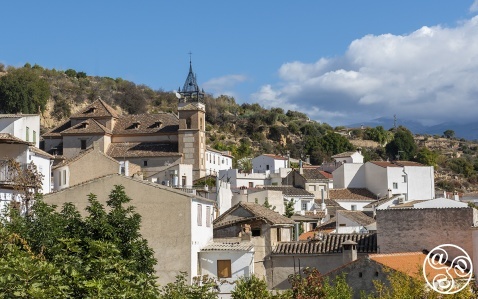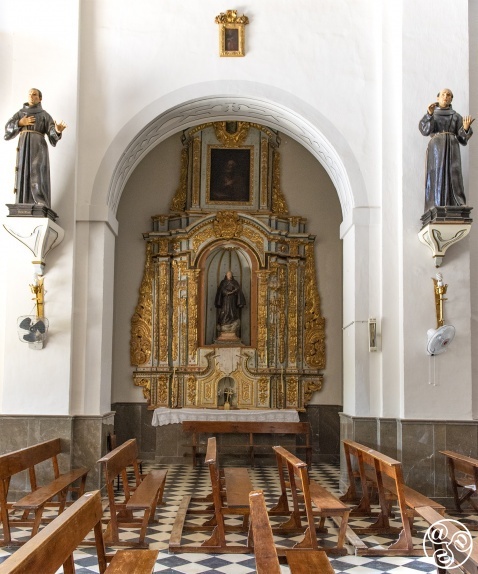
The village of Albuñuelas has been occupied since the prehistoric times |
|
Albuñuelas
by Alex Cutts
Albuñuelas is a white village nestled in the southwest of the Lecrin valley, 35 miles south of Granada city. The village is made up of three main neighbourhoods - Bajo, Alto, and Fernán Núñez, known locally as La Loma. Albuñuelas is also known as the lung of the valley, thanks to its abundance of greenery and forests.
History
Previously named Las Burnielas, meaning “the land of vineyards”, the present-day name Albuñuelas is derived from Arabic and signifies a “pretty thing” or something in “abundance”, although Arabic influences did not reach Albuñuelas until the invasion of the Moors in 711 AD.
Centuries ago, Arab traders passed through Albuñuelas, taking merchandise to the Mediterranean coast. Arabic influences can be spotted throughout the Bajo neighbourhood, with evidence of Moorish occupation present in buildings such as El Torre del Tio Bayo.
Following the 700 years of Moorish rule, came the reconquest by Iberian Christians, who forced the Muslims out of Spain circa 1492. Architecture in the region shows influences of both religions.
The Great Andalusian Earthquake of 1884 struck Albuñuelas on Christmas Day, causing great devastation to the region, particularly to Malaga and Granada provinces. The tremor destroyed more than 360 buildings in the village, including many houses; more than 100 residents died. Most of the damage occurred in the Alto neighbourhood, with some ruins remaining there today.
Franco’s dictatorship, following on from Spain’s Civil War, took a significant blow to the economy of the Lecrin Valley. The region’s inhabitants did not return to pre-Civil War figures until the 1970s.
Things to see
Iglesia del Salvador Church
Built during the 18th century, Iglesia del Salvador is the second parish church to take this name. The first Iglesia del Salvador was severely damaged by fire in the Moorish Rebellion of 1568.
After an attempted restoration in the 17th century, it was demolished, and a new church was built to take its place. The church was rebuilt again following its destruction in the 1884 earthquake.
Since the 19th century, the convent of the Franciscan Missionary Fathers of San Pedro de Alcántara has served the town as a church. Visitors can enter the courtyard of the now-dissolved monastery. The church features a spectacular gold leaf altar in the centre of its three naves and is topped with two tall towers, one featuring a clock and the other ironwork decoration.
Torre del Tio Bayo
The Tower of Uncle Bayo, located in the heart of Albuñuelas, was once a defensive fort and watchtower, and is one of the remaining buildings reconstructed from the ruins of The Great Earthquake of 1884. Standing at 10 metres tall (but thought to have been taller when first built), the structure is now considered an asset of cultural interest of Spanish Historical Heritage. The tower has served many purposes in its time, from a farmhouse and a family home, to a corral.
Tio Bayo lavadero (public washing basins)
Just outside the Torre del Tio Bayo, on Calle Caño, are the town’s historical Arab lavadero (public washing basins). The V-shaped troughs, made of cement and brickwork, feature ribbed, sloping interior walls where women scrubbed the dirt off clothes, an integral part of village life from the 14th century until about 50 years ago.
La Casa de las Conchas
The House of the Shells, built in 1933 by artist Francisco Palma Jimenez, stands out from the traditional, Arab buildings found in Albuñuelas. For eight years, Palma travelled 40 km to Motril beach to collect seashells which he used to decorate the facade of his home in order to avoid annual whitewashing.
Things to see outside the village.
Camino Forrestal de Albuñuelas
This track is accessible to vehicles, runs along the ridge above the village from the La Loma district. Offering magnificent panoramic views. along this track you will see the lone standing chimney of a now demolished brick factory.
At one point (GPS 36.93286 N, -3.6276 W), just to the north of the road, a series of stone threshing circles can be seen. It is unusual for half a dozen of these to be in one location.
Mines of Albuñuelas
In the hills above Albuñuelas there are many old, small, disused mines where metals and lead-derived minerals such as wulfenite and hemimorphite were mined. The mines were at the height of their production in the early 20th century. Many of the small mine galleries are still accessible today by amateur mineral collectors.
Hotels
Book hotels in Albuñelas
Countryside Walks
Albuñuelas is often visited by hikers who take advantage of the mountains surrounding the village and Rio Saleres valley, which runs in a steep gorge. There are waterfalls on this river above the village such as Cascade de Rio Saleres o Santo at (36.92351682795233, -3.6381678601258702) and Los Callejones.
There are many tracks that can be followed from the village into the surrounding countryside, looping around Rio Saleres and Rio Santo with stunning views of the surrounding springs and waterfalls.
GASTRONOMY
Oil produced from the region’s many olive trees is a staple ingredient in the cuisine of Albuñuelas. Some of the town’s specialty dishes include goat stew, homemade cheese, and tortilla. The town is also known for its honey, an ingredient in pestiños - sticky, honey-coated, deep-fried dough pastries.
Festivals
Popular festivals in Albuñuelas include Nuestra Señora de las Angustias, the procession of the Virgen, San Sebastián and la Virgen Niña, as well as music, dancing and a firework display.
Parking
Parking is available at the centre of the village, on Calle Carretera; a short walk from the church, and further on towards the town centre off Calle Estacion, nearby Café Bar Aré.
Next Villages
The neighbouring villages of Albuñuelas are Saleres, Restebál, Pinos del Valle.






